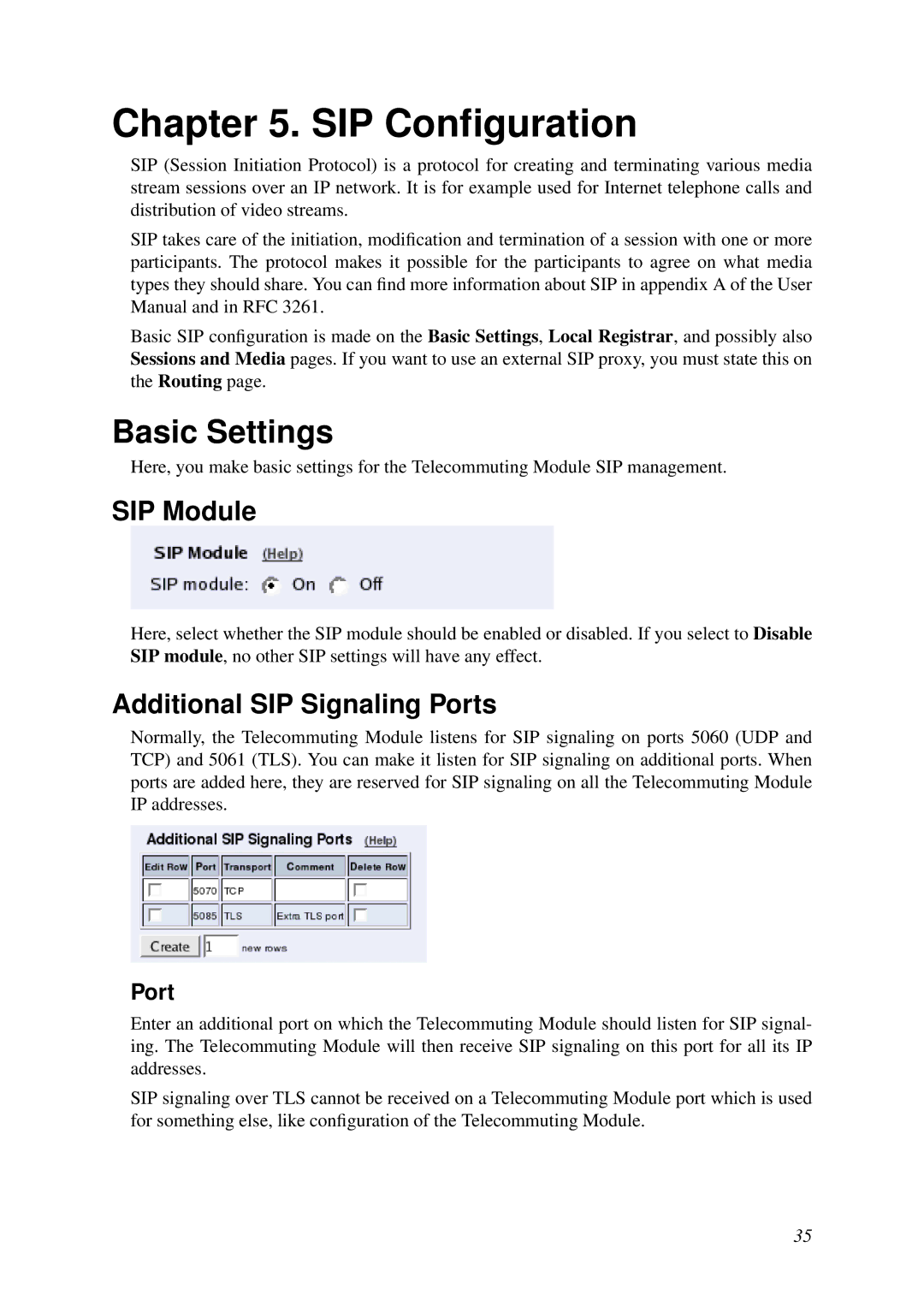
Chapter 5. SIP Configuration
SIP (Session Initiation Protocol) is a protocol for creating and terminating various media stream sessions over an IP network. It is for example used for Internet telephone calls and distribution of video streams.
SIP takes care of the initiation, modification and termination of a session with one or more participants. The protocol makes it possible for the participants to agree on what media types they should share. You can find more information about SIP in appendix A of the User Manual and in RFC 3261.
Basic SIP configuration is made on the Basic Settings, Local Registrar, and possibly also Sessions and Media pages. If you want to use an external SIP proxy, you must state this on the Routing page.
Basic Settings
Here, you make basic settings for the Telecommuting Module SIP management.
SIP Module
Here, select whether the SIP module should be enabled or disabled. If you select to Disable SIP module, no other SIP settings will have any effect.
Additional SIP Signaling Ports
Normally, the Telecommuting Module listens for SIP signaling on ports 5060 (UDP and TCP) and 5061 (TLS). You can make it listen for SIP signaling on additional ports. When ports are added here, they are reserved for SIP signaling on all the Telecommuting Module IP addresses.
Port
Enter an additional port on which the Telecommuting Module should listen for SIP signal- ing. The Telecommuting Module will then receive SIP signaling on this port for all its IP addresses.
SIP signaling over TLS cannot be received on a Telecommuting Module port which is used for something else, like configuration of the Telecommuting Module.
35
